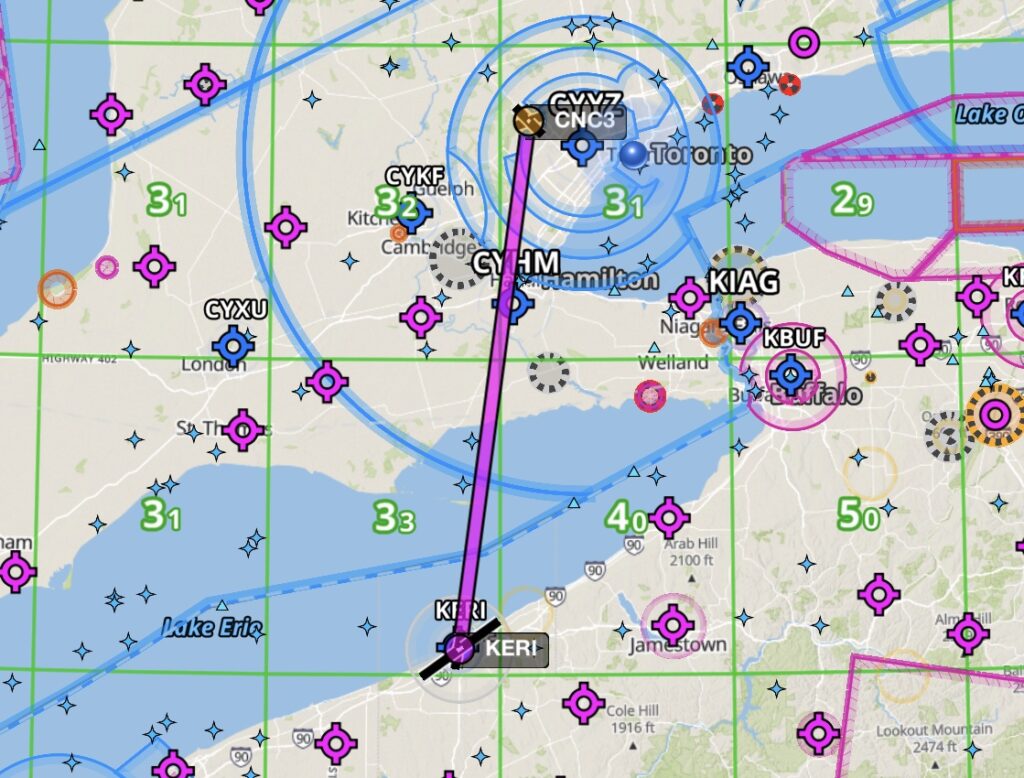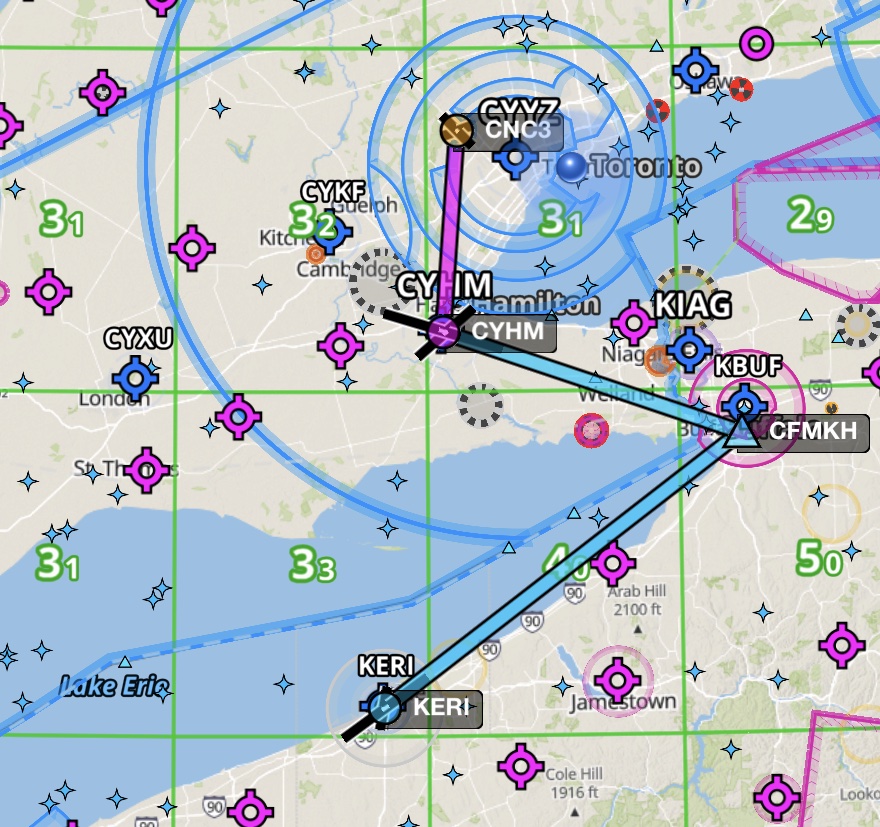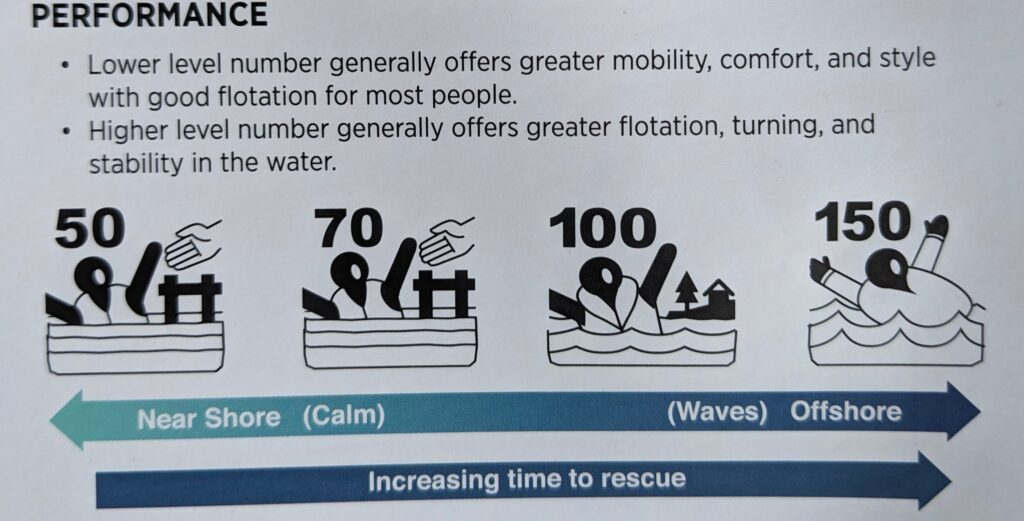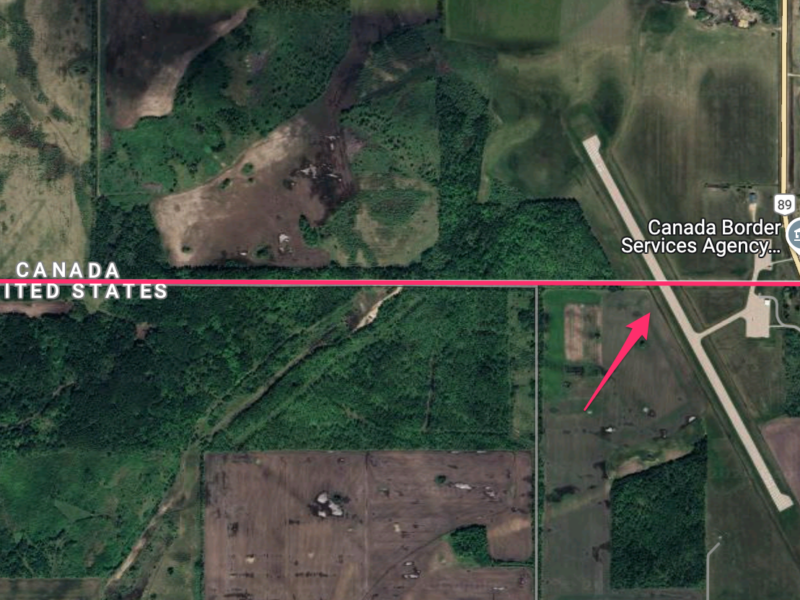One of the main advantages of flying is that you get to travel in straight lines. You know that saying: “The shortest distance between two points is a straight line”.
Take, for example, this short flight from CNC3 to KERI. As the crow flies (over Lake Erie): 101nm or approx. 50 min of flying time.

However, this flight requires some special equipment and considerations. Without such equipment Canadian Aviation Regulations (602.62 (1)) state that you must “remain within gliding distance of shore”. Significantly increasing the fuel burn and travel time to get to the same destination: 163nm or 1h17m (27 min longer).

Life Preservers, Flotation Devices, and Rafts
So when do you need to carry life jackets or rafts when flying over or near water? Let’s break it down:
- No special equipment needed (CAR 602.62 (1)): If you are flying within gliding distance of shore. This means that if you have an engine failure, you can continue and land on shore by gliding to your forced landing location. This distance to shore can be increased with altitude and ensuring that you fly the aircraft at Vg for the current aircraft weight.
- Personal Flotation Devices required (CAR 602.62 (2)): If you are flying 50 nautical miles or more from shore or you cannot glide to the shoreline then each occupant of the aircraft must have a life preserver for use onboard. It must also be easily accessible to the passenger in case of ditching (CAR 602.62 (4)).
- Lift Rafts required (CAR 602.63 (1)): If you are flying 100 nautical miles from shore or 30 mins of flight time at cruise from shore (whichever distance is the lesser). You are required to carry a life raft rated for the number of occupants on board the aircraft. The rafts must be easily accessible, near exits (CAR 602.63 (6)), and have specified survival equipment located in the CARs.

Life Preservers and Flotation Devices
There are three types of “flotation devices” that Transport Canada recognizes that will satisfy the Canadian Aviation Regulations. From Airworthiness Chapter 551:
- a “life preserver” is a flotation device, which when properly worn by a person, will provide adequate buoyant force to support the body in a safe and stable position in water and provide a self-righting force to maintain the face above the water.
- an “Individual Flotation Devices” is a flotation device, which when used by a person, will provide an additional buoyant force to assist in supporting the body in water.
- a “Personal Flotation Devices” is a flotation device other than a life preserver or individual flotation device.
Any item above that meets the CAN-TSO-C13 or CAN-TSO-C72 standards with the exception of PFDs which:
- Must meet standard: ANSI/CAN/UL-12402-5:2015
- Have a performance level of level 70 or higher.
- And must not auto inflate when in contact with water.
Use a Personal Flotation Device
PFDs are the most comfortable style of flotation device to wear while flying an airplane. They allow you to wear the device at all times while in flight, which ensures that you have one less thing to worry about in the event of an engine failure.

A Note About PFD levels
If you are planning on flying over an ocean, sea, or a great distance from shore. Consider a higher level PFD that will offer more protection.

When To Wear Your PFD
Wear your PFD before you overfly water and only inflate it after you have exited the aircraft.
A videotape produced by TC, Aviation (Central Region) demonstrates that it is almost impossible for even a healthy person in a controlled test environment to don a life jacket in cold water. This demonstration tends to support the 1988 CASB study which found not a single instance in which the occupants donned life jackets after the accident and prior to evacuating the aircraft.
Aviation Safety Study SA9401
Studies show that most people don’t bother putting on their PFD after the aircraft has ditched. Naturally, their priority is to exit the aircraft first, leaving their PFDs behind.
Don’t forget to demonstrate how to use the PFD to passengers as part of your pre-flight passenger briefing.
Underwater Egress Training
If you plan on overflying water a lot, or own a sea plane. You might want to consider under water egress training.


